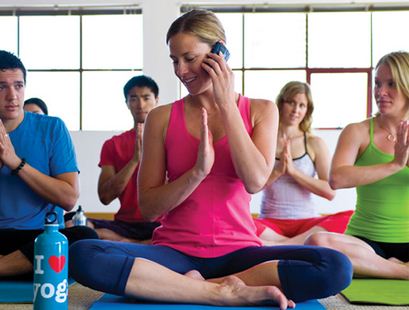When Alignment Does Not Align.

{source}
I had the good fortune of spending a long afternoon in a workshop at a lovely yoga studio in DC with an internationally respected yoga teacher.
It is refreshing and stimulating to spend time with other yoga teachers and a true joy to meet this charismatic and talented teacher.
That said…
… this teacher is deeply connected to two yoga lineages that hold strongly to alignment principles: Iyengar and (the yoga style formerly known as) Anusara. We all had our copies of Light on Yoga; split off into groups of four, we used cameras to take pictures of each other trying to copy Mr. Iyengar’s exact alignment. It was interesting and I have great pictures of me in Ardha Uttanasana!
For The Record: I have seriously studied Iyengar alignment, and have the utmost respect for the Universal Principles of Alignment from (the yoga style formerly known as) Anusara. Having clear and organized architecture you are working towards in an asana is critical for physical safety, and the mindfulness that comes with practicing specificity in physical structure is unparalleled.
That said…
… I believe the benefit to knowing and working towards specific alignment in asana is that a structure is created within which to observe yourself.
The lovely person teaching the workshop put a high premium on how a pose “looked” and made it clear that if you did not look exactly like Mr. Iyengar in Light on Yoga, you were doing a modification of the pose, but not the pose.
Say what now?
Pattabhi Jois is often quoted as saying: “Practice and all is coming.”
And I say, “Yes, mostly, but…”
There is much about ourselves that is malleable. Our muscles can get stronger and more flexible. Our minds can become more clear and focused. We can become more in tune, in touch, and aware of our bodies. We can overcome fear. And there are some parts of us that are unchangeable, first and foremost, the shape and design of our skeletons, which are remarkably different from each other.
Because of that, there are some ranges of motion, and maybe even whole asanas that will never be available to me (or you, or our students).
Why is this important?
I respectfully disagree with any teacher that says enlightenment is found in the perfection of alignment. I firmly disagree with any teacher who wants me to work harder until I look like Mr. Iyengar in his pictures. I firmly disagree with any teacher that thinks that all advanced asanas are available to all people with enough practice.
After teaching 25 private yoga clients a week for eight years, I can say with the utmost certainty, that if a student is doing a version of the pose that is interesting, challenging, and (most importantly) beneficial to them, they are doing the pose.
As teachers, we must study the respected schools of alignment, and then be just as prepared to let the prescribed alignment go if it does not serve our students. I believe the asanas exist to serve; we use them to create the intended benefit in the body we are working with. In the teacher’s seat, we must be flexible and allow for shifts if the official alignment is not creating the physical experience we intend.
I do not put all my (or my students’) energy into making their poses fit a prescribed shape. That is where strict adherence to alignment becomes a hindrance to deepening the practice because it can be a waste of time, energy, and potentially cause harm.
The specific structures exist to teach us discernment. As in — “Am I restricted in this pose because my psoas is tight, or am I restricted in this pose because my femur bone is jamming into the lip of my acetabulum?”
That is a very interesting question that will teach you about your body, as well as how to listen to it. As teachers, we should be creating experiences that help students wake up to their own personal experience. We should not be telling them what (we assume) they are feeling.
When strict alignment is taught skillfully, it is a beautiful, mindful practice; but as teachers, we must move beyond pure abstraction and deal with the objective realities of actual bodies and people. Critical seeing and thinking is a necessary ingredient of that. I have seen too often a strict adherence to a prescribed alignment replace all critical thinking.
What do you think the purpose of alignment in asana is? Have you ever had an experience where strict adherence to a prescribed alignment was unhelpful or even harmful for you or your students?
*****
Francesca Cervero has been a full-time private yoga teacher in New York City since 2005. The foundation of her teaching practice comes from OM Yoga Center’s style of alignment-based vinyasa. Her teaching is also inspired by the years she spent as a dancer, the subsequent years she spent in physical therapy, and a deep study of anatomy. She has a thriving business teaching 25 private clients a week and a full practice teaching and mentoring yoga teachers in The Science of the Private Lesson. You can connect with Francesca on her website, on Facebook, on Twitter, and on Instagram.

